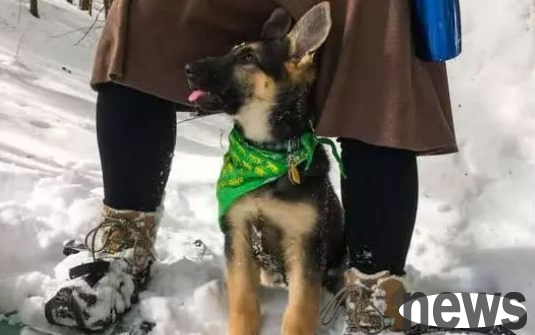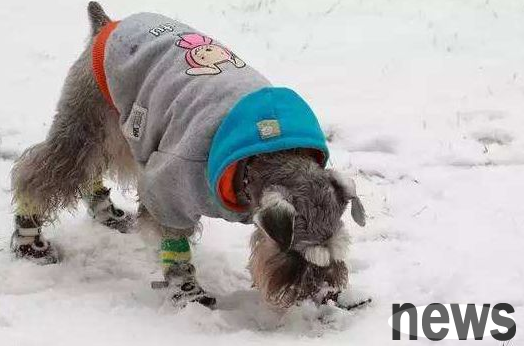Even so, going out to walk your dog in winter still tests whether the dog shovelers have rich enough experience. Because many harms brought by climate are not easy to be discovered in time. For energetic dogs, it is obviously unrealistic to prevent...
Even so, going out to walk your dog in winter still tests whether the dog shovelers have rich enough experience. Because many harms brought by climate are not easy to be discovered in time.
For energetic dogs, it is obviously unrealistic to prevent them from going out to exercise.
If you want to walk your dog scientifically in winter, what specific prevention preparations and care measures should be taken?

1. Protect dogs that are prone to cold, such as short-haired small dogs such as Chihuahua Deer, be sure to wear clothes. Especially for short-legged dogs, protecting their stomachs with clothes can prevent their stomach from getting cold or damp.
Dogs in the following periods are very prone to cold and sickness, so special attention should be paid:
①Puppies under 6 months of age or dogs with light weight have poor resistance and are prone to colds and diarrhea;
②Alder dogs and arthritis have low temperatures that can cause joint stiffness and feel pain when walking;
③Dogs with diabetes, kidney disease, heart disease, etc. have poor blood circulation and are difficult to regulate their body temperature.
Husky, Alaska, Samoyed and other varieties from cold areas have high ability to keep warm, but they cannot be taken lightly. The age of the dog, whether the body is wet, or whether it is sick, may increase the risk of frostbite in these dogs.
2. Control the frequency of dog walking in winter
In winter, dog walking can be done when the temperature is high and there is sun. The time can be changed from long-term walking to short-term multiple walking times, increasing the frequency but reducing the time for each walking.
3. Do not use metal dog chains
metal traction leashes, dog chains, etc. in winter, and you can all retreat to the second line. If metal products frequently come into contact with dogs, their body temperature will be reduced and they will feel cold for a long time.

4. Do not walk your dog on the ice. When the temperature in the north is very low, many lakes and rivers in the park will freeze. Even if the ice surface looks thick, do not let the dog play on it. If a dog falls into the water due to a crack in the ice surface, the consequences will be unimaginable!
The dog fell into the ice river, but fortunately was rescued by passers-by
5. Be careful of the hidden "organizations" on the road after the snow, many "organizations" on the road were covered with snow, which was difficult to detect. Broken glass, building materials, broken plants, etc. may cut the dog's feet. So try to let the dog walk on a safe and clean road.
6. Do not leave your dog in the car alone
The temperature is too high in summer and too low in winter. Leave your dog alone in the car in the parking lot. The former can easily cause the dog to be dehydrated and die, while the latter can easily cause the dog to be frostbite. Be sure to keep your dog with you when traveling!
The dog who is locked in the car and feels uncomfortable
▼
7. Beware of toxic substances!
After snow, many areas will sprinkle salt or antifreeze to melt the snow, which are toxic to dogs. When going out, you must control your dog and not let it lick and eat snow randomly.
In addition, after returning from walking the dog, you need to wash the dog's feet and toes in time to prevent toxic substances from remaining, and check whether there are any scars on your feet in time.
You can ask your dog to put on shoes when going out on snowy days
8. Trim your feet in time
When going out in winter, when it encounters rain and snow, your dog's feet will be wet when they come back. If your feet have long hair, there may be some small ice cubes hidden. If the small ice cubes melt in the hair, it may not only cause frostbite, but also cause interponeitis due to moisture.
Therefore, cutting short the hair of your feet, washing your feet when you go home, and then drying the feet and toes with a dry towel are the three most basic steps to protect your dog's small feet.